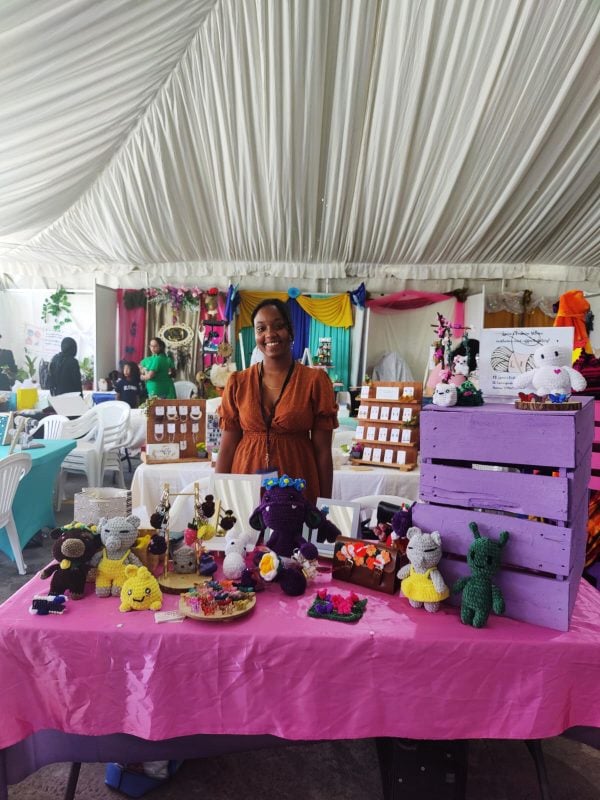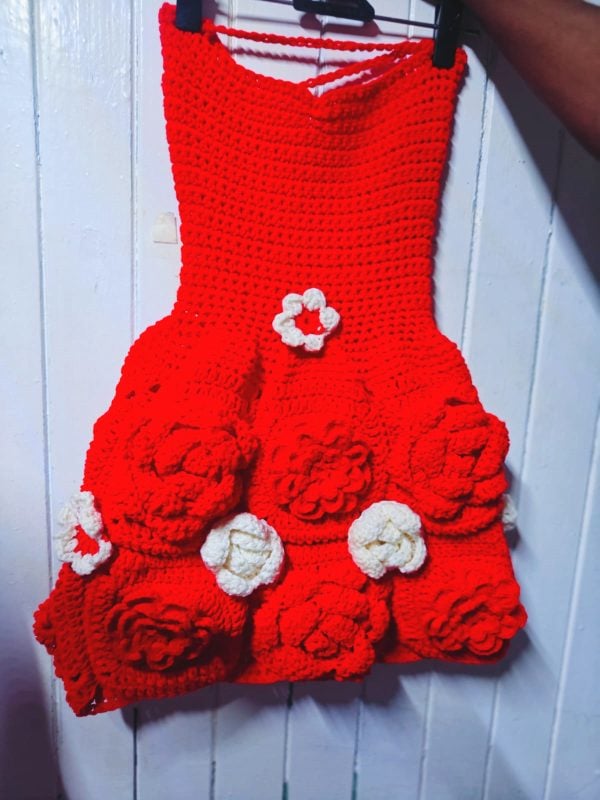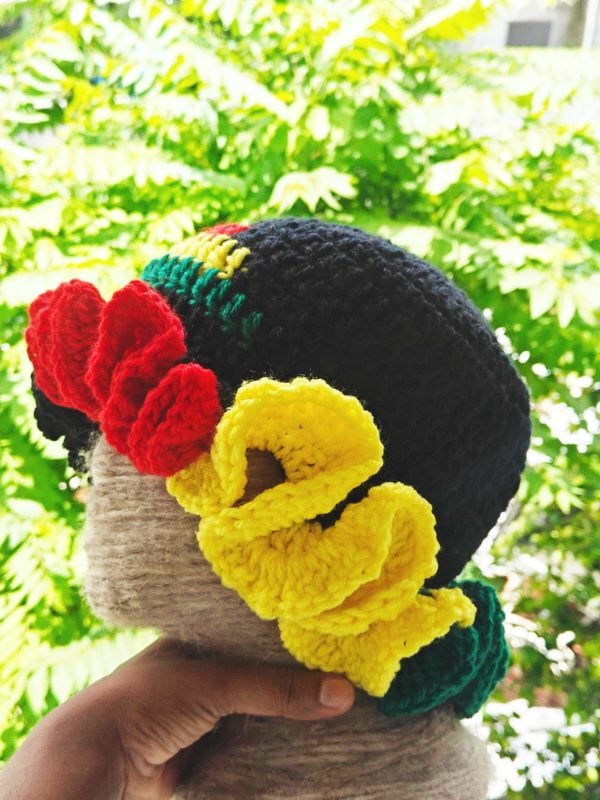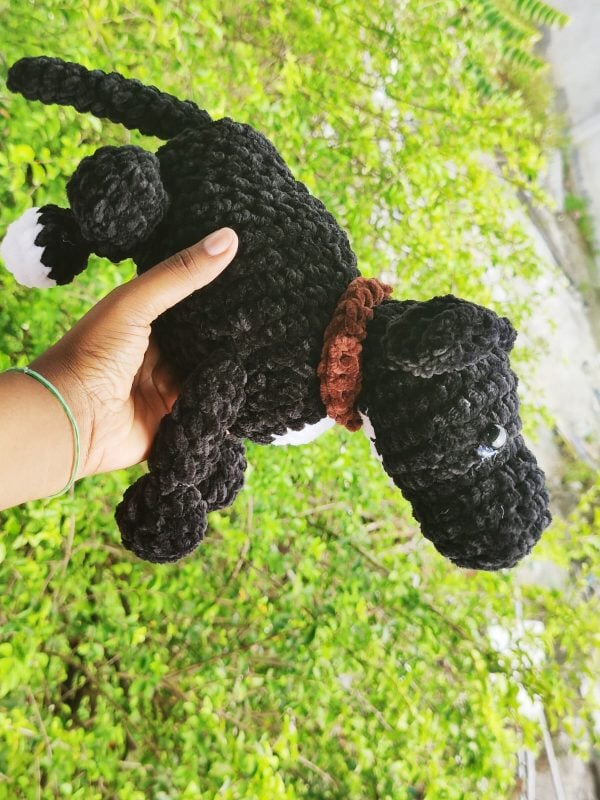By Rae Wiltshire
Damali Cox shared that crocheting has been a tradition in her family for generations. Both her mother and grandmother were crochet artists who had tried to teach Cox and her sister the craft when they were just 7 and 9 years old. However, Cox admitted it had been difficult for them to focus and take the lessons seriously. It wasn’t until adulthood that Cox and her sister decided to pick up the art.
About five years ago, while on maternity leave, Cox began crocheting, taking photos of her creations and posting them on social media. People began asking if her items were for sale. Initially, crocheting was simply a way for her to relax and bond with her sister. However, Cox acknowledged that in the beginning, it was anything but relaxing. Learning the new skill was challenging, and she often missed stitches, which she found frustrating. To add to the pressure, her sister became proficient much faster, which sparked a friendly competition between them.
“So this made me more determined to get better than her,” Cox shared with a laugh. Around the four or five-month mark, the process finally became relaxing and her passion for the craft continued to grow.
She expressed that there has been major growth in her craft. “Given the fact that the first thing I crocheted was supposed to be a square, and I still don’t know what shape that was, and now I can easily do a pattern just by looking at it, I have grown a lot,” she said. “I keep growing because there’s always room for improvement. You always learn a new stitch. You’re always learning to combine new colours. It’s a learning curve.”
In the beginning, she focused solely on making headbands, as they involved simple straight lines. Now, her repertoire has expanded to include scrunchies and even toys. She has also been actively learning about the various types of yarns and needles required for different types of projects.
Being a diverse crochet artist has been a major advantage for Cox, especially since she has been a full-time entrepreneur for the past two years. Initially, she found it challenging, particularly when it came to pricing her work. She struggled with not underselling herself while still keeping her creations affordable for clients. Cox explained that she had to remind herself that she was running a business and needed to stay determined, even when profits were slow. Now, she views her crochet work as a business, having seen the fruits of her labour, whereas before, she only saw it as a “side hustle.”
Another challenge Cox faced as a creative artist was the response she received after deciding to pursue crocheting full-time. She explained that some people, accustomed to buying mass-produced items online, didn’t always appreciate the value of her handcrafted pieces. She recalled instances where people told her they could find crochet items much cheaper elsewhere, which made her second-guess her effort and dedication. “It makes you just want to not do it anymore,” she remembered.
She also shared that some people dismissed her craft entirely, telling her, “Oh, crocheting is not a job. You should go and do something better.” Cox explained that although she has a degree and worked in a traditional job, it wasn’t fulfilling, and she chose to follow her passion instead. She emphasised that many people don’t realise that if everyone worked corporate jobs and no one made art, there would be no art for people to enjoy. “We cannot all fall into that system,” she said. Cox often reminds herself that her work holds meaning, not just for her but for others as well. Cox also describes herself as very stubborn, and part of what motivates her is the desire to prove her naysayers wrong. She recalled an encounter when she was leaving her job, where a staff member said, ‘Good luck with your little business.’ Cox shared, “I took that personally. I took that tone very personally. And I decided that nobody was ever going to tell me again, ‘good luck with your little business.’” That encounter was two years ago, and since then, her business has grown significantly, with many more people now aware of her work.
Cox has also ventured into teaching. She shared that without the internet, she wouldn’t have learned many of the techniques she uses today. Whenever she promoted her work, people would often express their desire to learn crochet, and she began volunteering to teach them. This became her way of giving back to a supportive community, while also serving as a way to diversify her business.
Cox is optimistic about the future of the crochet industry in Guyana. She noted that when she was younger, most people were only interested in buying chair coverings, but the industry has since become much more creative. “I often see people wearing crochet hats, tops, vests, and even entire outfits made from crochet,” she said, adding that this was not the norm during her childhood. Currently, Cox engages with her clients through social media, which has helped her business feel more personalised and has allowed her to build and sustain a loyal client base. She said having a client base who returns is greatly satisfying, because it represents appreciation for the work she is doing.












